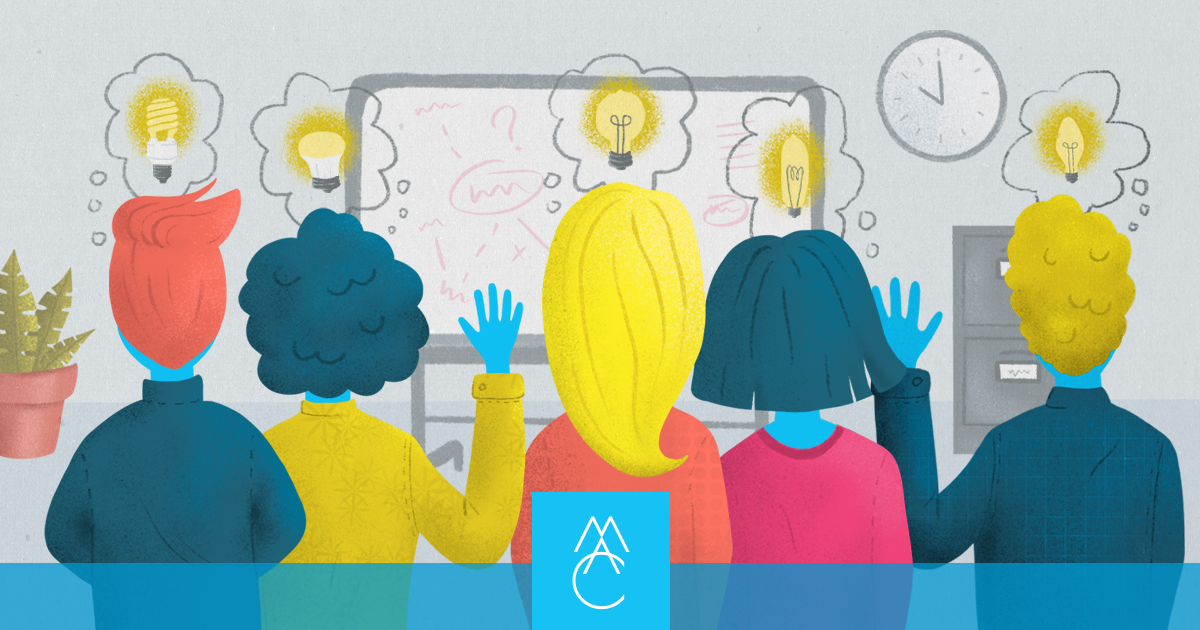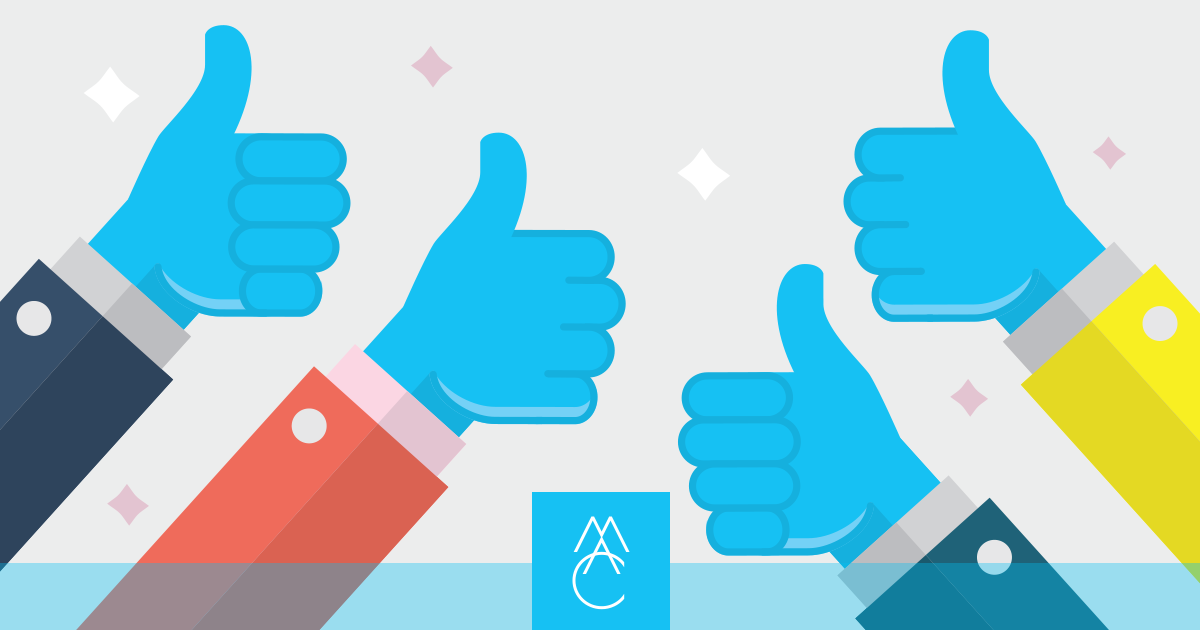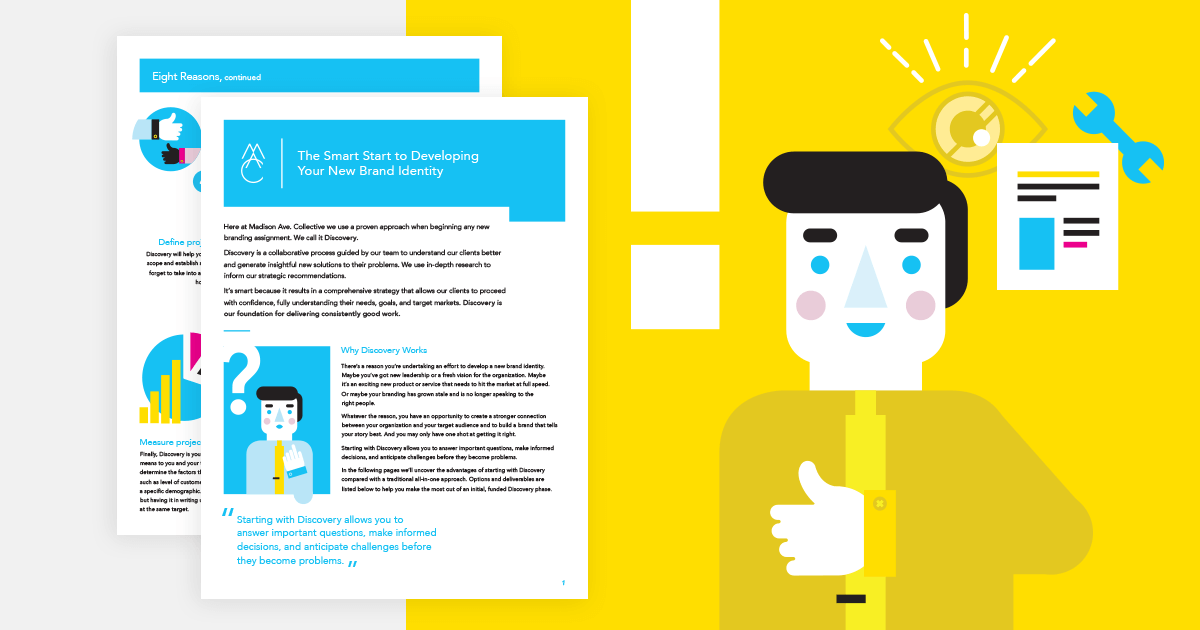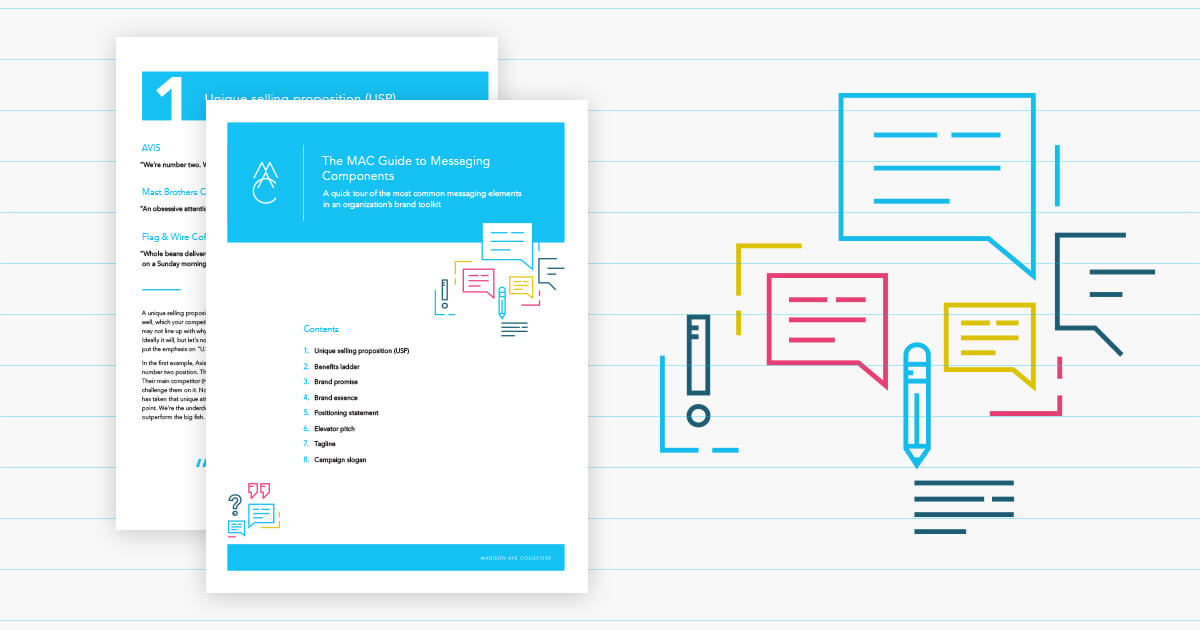
The Half-day Brand Messaging Workshop (What It Is, Why It Works)
Here at Madison Ave. Collective, we used to do brand messaging the slow way.
First, we would schedule interviews. Lots of interviews. We would talk to chief officers about the heart and soul of their company. We would talk to a long list of other stakeholders, too, to understand their particular viewpoints. After generating a ton of qualitative data, we would dig through for insights and patterns in order to put a finger on the organization’s true story: its authentic culture and identity. We would share our findings with our client and further refine our conclusions; then, finally, we would use what we discovered to craft some powerful brand messaging.
The process worked. It’s just, there were a couple problems.
One is simply the amount of time it took to do it. The other is a basic truth in our industry, which will be familiar to any creative professional reading this: any time you unveil work to a client without having involved them closely on the journey, you’re going to meet with resistance. It doesn’t matter how great the work is; there’s simply a human impulse to resist the unfamiliar, especially when it feels personal, as branding often does.
Now, at MAC, we believe in good process. In fact, that’s often a reason our clients choose us: we bring discovery to a whole new level, and we certainly never want to dilute that. However, we also strive to raise our game, and in this case, that meant asking ourselves two questions:
- How can we get the same depth of insight in a faster, more efficient way?
- How can we involve our client more closely on the journey, so they feel just as invested in the final product as we do?
These questions led us to make some deep changes in our discovery process. And the result?
Well, the result is our brand messaging workshop. We ask our client to gather a group of participants for an entire morning or afternoon, including all vital perspectives and a variety of viewpoints. Then, over four hours, we work together to unearth some major insight—getting the energy flowing, trying out ideas, seeking desensus (productive disagreement), and setting the stage for the deliverables to come.
How do we do it?
Like so.
Part One: Generate Consensus
Our standard messaging workshop is divided into three blocks of time. The purpose of the first session is to generate consensus around the branding effort itself. Why are we here? How will we know when we’ve succeeded? What are the organization’s real challenges, strengths, goals, and audiences?
To that end:
- On the whiteboard, we list the strengths and challenges we’ve already discovered in research; then we invite participants to reflect on these: what’s right, what’s wrong, what’s missing?
- After presenting on the primary audiences we’ve already identified, we use facilitated group discussion to fine-tune our understanding of each persona.
- We then use an anonymous feedback activity to allow individuals to share their unedited perceptions about the organization, both positive and negative. We quickly skim for patterns, then share the aggregated highlights with the room.
By the end of this block, participants have a common understanding of the purpose of the messaging that we’re aiming to develop. They know, too, whom we’re aiming to reach and what those specific audiences need to hear.

Elisabeth McCumber facilitates a messaging workshop for one of MAC’s nonprofit clients
Part Two: Develop Concepts
The purpose of our second block of time is to develop the concepts that will feed into the creation of a positioning statement (“we are a [what] that [does what] for [whom]”) — which is an essential component for any brand toolkit, locating the company in its market and identifying its unique selling proposition.
Here’s how the session goes:
- We divide the room into three teams and assign each group one portion of the statement to work on. (The first group takes [what], the second group has to come up with a [does what], and the third group must answer [for whom].)
- We begin with a few minutes of silent writing time so quiet folks have a chance to get their ideas out before launching into a small group brainstorm.
- Once the teams have begun collaborating internally, we visit each group to help them narrow their ideas down to a single answer … often not easy to do!
- When a group has settled on its wording, one of its members is invited to walk up to the whiteboard and fill in the blank for that portion of the statement. (This makes for a very disjointed, and usually hilarious, positioning statement indeed.)
- After assuring the room that this is merely a brainstorm, not a finished product, we reflect on the rationale behind each team’s choice as well as any alternatives they considered, tapping into multiple perspectives to understand the internal and external landscape of perception that their organization is navigating.
Again, no final decisions are made, but by the end of this block, the entire group respects the effort it takes to develop brand messaging; participants also share a common knowledge of why certain choices may work better or worse for their organization. Perhaps most importantly, they feel a personal investment in the outcome: their voices have been heard, and this statement now belongs to them.
Part Three: Try it Out
The purpose of our third and final block is to train participants on their elevator pitch, so they have some language in their back pocket to talk to people about the company — and the comfort level to do so. There’s often a bit of stagefright to overcome here, so we start this session with a warm-up.
- We use an improv theatre game to get everyone moving and thinking in the moment, while generating specific examples of how the organization delivers value to its audiences.
- We then engage in a small-group question-asking exercise, giving each team member some practice in coming up with true conversation-starters — yet another tricky challenge!
- Next, we ask people to pair up and trade pitches, one on one. This activity, however, is carefully structured. First, the person who will be listening to the pitch chooses which target audience they’ll represent (“I’m Joan, our 56-year-old potential donor”). Then, the pair decides together where they ran into each other (at a kid’s baseball game? in the elevator?). Finally, the person giving the pitch tells the recipient three (and only three) things: 1) some version of the positioning statement that we developed during Block Two; 2) one specific example of the value that the organization delivers to its audiences, drawing from the improv exercise we did earlier; and 3) one open-ended question that could theoretically keep a conversation going.
- After everyone has had a turn to give and receive this simple, three-part pitch, we invite at least three brave volunteers to demo their pitch for the entire room.
At the End of the Day
Our half-day messaging workshop is an intense experience — but oh, so productive. In fact, we’ve received overwhelming appreciation from every client we’ve facilitated this experience with to date.
At the end of the day, participants feel heard, inspired, and aware of their organization in a more nuanced and meaningful way. Meanwhile, our team goes home with notes, photos of our whiteboard brainstorms, and concepts from many different perspectives, so we can begin the task of turning what we learned into an incisive messaging toolkit for our client’s new brand.
To be clear, this process does not remove the work it takes to develop strong, creative messaging. What it does, rather, is dramatically reduce the hours leading up to that work — while significantly improving the quality of information we’re able to draw from.
Most of all, it brings everyone together on the final product. When workshop participants later see our deliverables, they also see their own insights shining through. They understand the work it took to get there, and they share a common story for why we’ve chosen one direction over another. Ultimately, client buy-in (to say nothing of satisfaction) is easier to achieve, and that’s a win for everyone.
After all, a brand isn’t built to sit on the shelf.
It’s meant to get out there in the real world, where real people are. It’s an identity that every member of an organization should feel genuinely proud to live on the daily — and when you find your way there together, that identity is only more authentic.
This article is also published on Medium.
More Resources
-

Article
Branding for nonprofits: How to get internal buy-in and build a stronger brandNonprofits exist to make an impact. And branding can help you deepen the impact you make: clarifying your goals, translating...
-

eBook
The smart start to developing your new brand identityAll branding and marketing projects start with questions. Lots of questions. In order to uncover unknowns and proceed with confidence,...
-

eBook
MAC Guide to Messaging ComponentsFrom positioning statements to elevator pitches to taglines, here are eight messaging elements you can use to define and promote...



